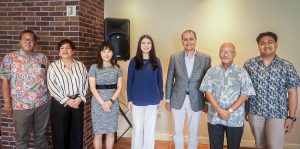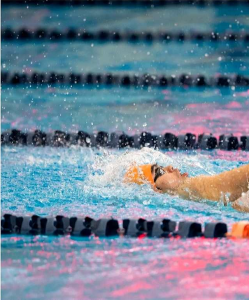Warning out vs unregistered water users
The CNMI Water Task Force warned Friday that unregistered water users would be identified and disconnected when the government and the Commonwealth Utilities Corp. begin a one-time sweep for identification and leak detection.
According to Water Task Force chair Diego T. Benavente, contracts for a systematic leak detection program from reservoirs to CUC customers will soon be implemented in hopes to identify leak-prone areas and unregistered users.
The effort will require digital correlators to accurately identify system leaks, categorize them based on volume loss, and report them for repair, he added.
He said the task force and the CUC would also do a one-time sweep of all customers to repair minor leaks, install water conservation devices, and develop public education programs. He warned that unregistered users would be identified and disconnected. These users will be required to apply for hookup, metered, and reactivated.
Benavente disclosed that the recently approved $5.2 million spending plan for Saipan’s water crisis would finance various pending projects necessary to meet the task force’s plan to provide 24-hour potable water for Saipan residents.
Benavente said aside from an update on the rate study conducted by the Commonwealth Utilities Corp., the task force would be able to implement the contracts for hydraulic A&E designs and construction to isolate various wells from the distribution system.
The Well Isolation program is anticipated to improve the delivery and treatment of water to reservoirs and direct injection of chlorine into the distribution system will be eliminated.
He said all wells in the Sablan Quarry and Agak well fields will be transmitted to the nearest reservoir for treatment and delivered to customers through distribution lines.
According to Benavente, the grant also provides for the task force and the CUC to increase the production of water through its Phase 1 project that includes a New Wells Development Program. The project would include construction of water and power lines for the nine new wells that will be constructed this year at the Obyan well field and the Sablan Quarry well field at Rapagaul.
“The task force and the CUC continue to [look at] rainwater catchment systems as a viable source of water. The task force and the CUC have phased this program into four categories—residential, commercial, industrial, and government facilities,” explained Benavente.
He stressed that incentive programs and installation of rainwater catchment systems for large commercial and government buildings will be addressed during this phase.
The task force said the most important programs of the project is the installation of electronic meters on non-pressurized zones. This is the first time that technology is available to account for water use in a non-pressurized area.
“These meters do not read air. CUC will be able to charge customers for water based on use regardless of the number of hours water is delivered. It will encourage customers to repair leaks and conserve. Also, the task force and the CUC will be able to conduct a leak detection effort in 24-hour pressure zones,” Benavente further explained.
The new funding assistance would also finance the new study on the rate structure of the CUC reiterating the need to update the rate structure to assist the agency in cost recovery.
Benavente said with the approval of the $5.2 million spending plan, funding for technical assistance to update the CUC’s rate study that was developed a few years ago was also provided.
Benavente said it is very important that the rate study be updated to determine the appropriate rate for water use.






